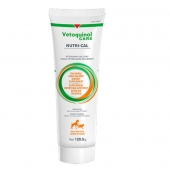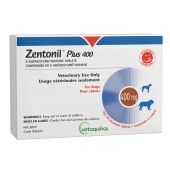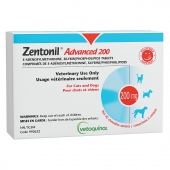You may notice subtle changes in your pet over the years. Maybe they don’t spend as much time outdoors as they used to or now seem to shy away from stairs. Perhaps “little accidents” are becoming more common. By understanding the aging process and making minor changes to your pet’s environment, you can help them enjoy a rich and fulfilling life for the next chapter of their life .
At what age does a cat or a dog become “old?”
Definitions of old age in pets vary, but cats and small or medium-sized dogs may be considered seniors from about eight years old—the equivalent of being in their late fifties in human years. Larger dog breeds (typically over 50 lb) tend to have a shorter life span and are considered senior pets sooner, from six years old.
Signs of an aging pet
Your pet will likely want to take things easy as they enter their golden years. They may spend more time napping or sleeping, play less vigorously, walk with greater difficulty, have trouble climbing stairs or jumping and display less overall energy. Their behaviour may also change; they could become more irritable, anxious or sensitive to sounds or not groom themselves as much.
Take note of any physical and behavioural changes in your pet and share your observations with your veterinarian. They can help you identify which symptoms are natural, and which could be signs of an underlying condition, such as arthritis or diabetes.
5 ways to provide senior pet care
Switch to specially formulated senior pet food.
As pets grow older, they tend to become less active and burn less energy daily. Eating the same amount of food may put them at risk of gaining weight. Your veterinary clinic can recommend specially formulated senior pet food that could provide a more suitable diet. Such food typically contains fewer calories per serving and is easier for your furry friend to digest.
Make your home “senior pet-friendly.”
Minimize jumps and the use of stairs. For example, add some low furniture or a footstool so your cat can more easily reach their favourite elevated lounging spot, and provide a comfortable resting area on every floor of the house. Additionally, non-slip mats or rugs may help your dog navigate slippery floors. A raised feeding platform could also make it easier for your pet to eat.
Keep your pet’s nails trimmed.
Overly long nails can affect your pet’s balance and stability while walking, cause pain, and snag on surfaces such as carpets. Trimming your dog or cat’s nails becomes even more vital as they age and naturally lose mobility.
Provide a soft and comfortable bed.
Osteoarthritis is highly prevalent among house pets, affecting nearly half of dogs over the age of eight and 90% of cats over the age of 12. Resting in a soft, comfortable bed in a warm and quiet area can give your pet some welcome relief from joint pain. If your cat or dog spends most of the day napping, consider treating them to an orthopedic pet bed.
Switch annual veterinary visits to a 6-month schedule.
Older pets are at greater risk of developing many medical conditions – they don’t heal as quickly, and their immune system may not be as efficient as in their younger days. Switching their annual veterinary visit to a semi-annual schedule can help detect diseases and health issues early.






